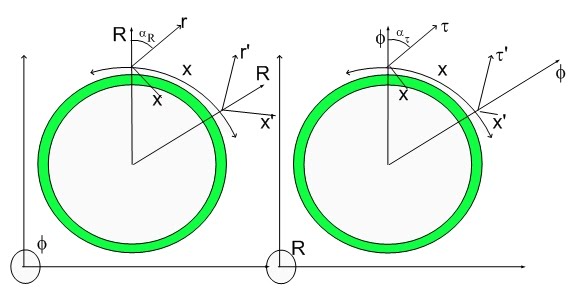Posted by: M P 16 years, 8 months ago

Galaxy rotation curve
There is a problem called Galaxy Rotation Problem which has been used to support the existence of Dark Matter.
I have been thinking if this could be explained by my theory and Hypergeometrical Gravitational Law. I see that the velocity is constant for stars farther from the center of the Galaxy.
This somehow raises questions in the minds of scientists. It would raise questions in my mind if I didn't remember that the measurement was made on a spiral galaxy, the we are not speaking of a unstructured mass distribution. Instead the spiral galaxy has mass threads which one would imagine to be held together by gravitation.
As you know, Gravitation is quite dependent upon how far objects are and a thread of stars means that you have a quasi-connected structure of stars.
One wouldn't be surprised if instead of stars, one had a bunch of threads (physical threads made of fabric for instance). Since the fabric would keep it together, all parts of each thread would travel exactly at the same velocity.
This is the obvious explanation. Unless someone has information about the transversal distribution of mass along those threads and have already disposed that possibility, I wouldn't bother to consider the problem.
The other possibility is to do the experiment on a Spherical Galaxy (without visible threads). The problem is that it is difficult to pinpoint and keep track of individual stars in a diffuse galaxy. On a threadless galaxy or if one looks at outliers (stars on the extreme edges of a spherical galaxy) I would expect that Newton's Law would be sufficient.
Cheers,
MP

Rotation curve of a typical spiral galaxy: predicted (A) and observed (B).
The rotation curve of a galaxy can be represented by a graph that plots the orbital velocity of the stars or gas in the galaxy on they-axis against the distance from the center of the galaxy on the x-axis. Stars revolve around the center of galaxies at a constant speed over a large range of distances from the center of the galaxy. Thus they revolve much faster than would be expected if they were in a free Newtonian potential. The galaxy rotation problem is this discrepancy between the observed rotation speeds of matter in the disk portions of spiral galaxies and the predictions of Newtonian dynamics considering the visible mass. This discrepancy is currently thought to betray the presence of dark matter that permeates the galaxy and extends into the galaxy's halo.
Archive
2017
2016
2015
2014
2013
2012
2011
2010
2009
2008
- December (5)
- November (4)
- October (13)
- September (7)
- August (5)
- July (6)
- June (5)
- May (5)
- April (7)
- March (6)
- February (7)
- January (5)
2007
- December (4)
- November (13)
- October (10)
- September (3)
- August (24)
- July (12)
- June (2)
- May (1)
- March (4)
- February (12)
- January (4)
2006
Categories
- Brian Greene (1)
- Censorship (8)
- Coherent Nuclear Fusion (1)
- Erik Anson (3)
- Hypergeometrical Universe (290)
- Kip Thorne (1)
- Lawrence M. Krauss (1)
- Max Tegmark (1)
- Michio Kaku (2)
- Neil deGrasse Tyson (1)
- Paul Ginsparg (1)
- Science News (2)
- Sheldon Glashow (1)
- The Undiscovered Continent (1)
Comments
There are currently no comments
New Comment